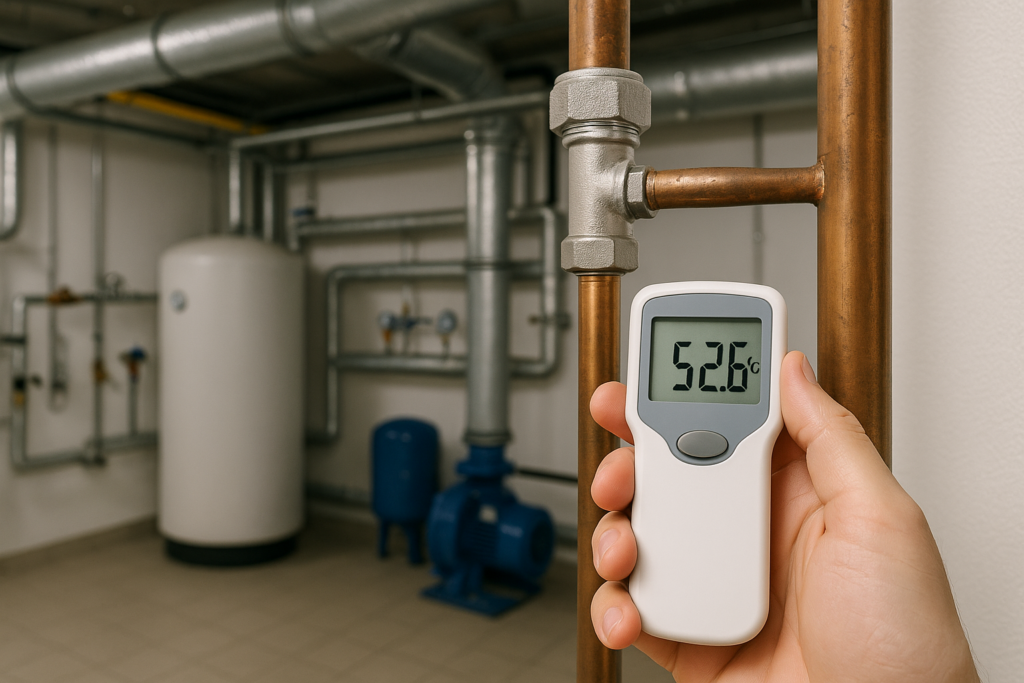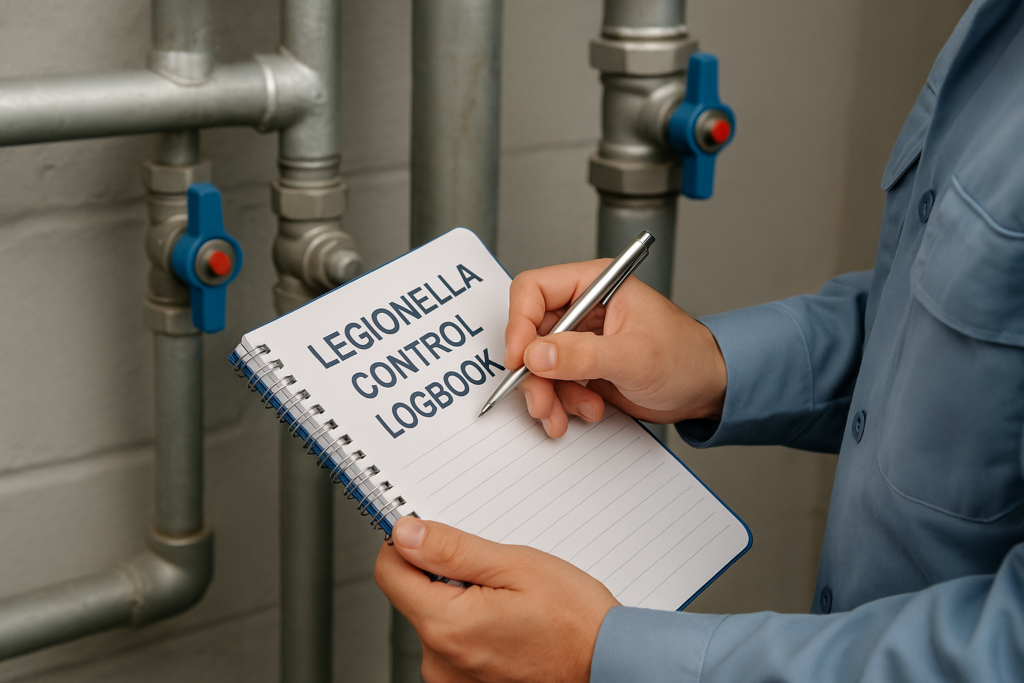Water Hygiene & Legionella Control Services
What Is a Legionella Risk Assessment?
A Legionella risk assessment is a legal requirement for property managers, landlords, and duty holders responsible for any premises with a water system. The assessment identifies risks of Legionella bacteria growth — a potentially deadly pathogen responsible for Legionnaires’ disease — and provides a written scheme of control to manage and minimise the risk.
We assess the condition and design of your cold and hot water systems, water storage tanks, temperature controls, pipework dead legs, and any potential areas of stagnation or aerosol release. The goal is to ensure your system does not provide an environment for bacteria to thrive — especially in facilities with vulnerable individuals.
If you’re not regularly testing, monitoring, or flushing your water systems, or if you’ve recently acquired a property with unknown hygiene history, it’s essential to have a Legionella risk assessment carried out without delay.
Why Choose All Well Property Services?
- Qualified Legionella assessors with industry-specific experience
- Fast turnaround on reports and water testing
- Trusted by landlords, housing associations, schools & care providers
- Affordable pricing with no hidden extras
- Digital reports, schematic drawings, and logbooks provided
We’re not just box-tickers — we partner with our clients to make compliance practical, proactive, and stress-free. If needed, we can schedule ongoing water hygiene maintenance plans tailored to your risk level and occupancy.
Our Legionella Control & Water Hygiene Services
At All Well Property Services, we provide a full suite of Legionella control and water hygiene compliance services to keep your premises safe, legal, and operational.
Legionella Risk Assessments
A Legionella risk assessment is a legal requirement for anyone who controls a building where water is stored or circulated. This includes residential landlords, commercial property managers, and duty holders in care homes, schools, offices, and industrial units. Our qualified assessors carry out comprehensive risk assessments in line with HSE’s Approved Code of Practice L8 (ACoP L8) and BS 8580-1:2019 standards to ensure you are legally compliant and protecting occupants from the risk of Legionnaires’ disease.
During an assessment, we thoroughly inspect your entire water system — including cold-water storage tanks, hot water cylinders, distribution pipework, showers, taps, and any aerosol-generating outlets. We identify conditions that support bacterial growth, such as water stagnation, insufficient temperature control, and poor insulation. Our reports include a schematic drawing of your water system, a risk classification for each area, and a practical control plan tailored to your building’s needs.
For landlords and letting agents, a Legionella risk assessment is essential under the Health and Safety at Work Act 1974 and the Control of Substances Hazardous to Health (COSHH) Regulations 2002. Failure to assess and control Legionella risk can result in prosecution, fines, or claims of negligence in the event of an outbreak. With All Well Property Services, you get clarity, compliance, and peace of mind — every time.

Water Tank Cleaning & Disinfection

Cold water storage tanks, particularly in older buildings or HMOs, are a common breeding ground for bacteria like Legionella pneumophila. Sediment, rust, scale, and biofilm can accumulate in these tanks over time, especially if they are poorly insulated, rarely cleaned, or oversized for their purpose. We offer professional water tank cleaning and disinfection services to ensure your storage systems remain hygienic, safe, and compliant with water safety regulations.
Our team drains, inspects, and manually cleans your tank, removing sediment and scale before applying a WRAS-approved disinfectant. Once the system is flushed and rinsed, we document the entire process and issue a certificate of disinfection — useful for demonstrating compliance to environmental health officers, insurers, or auditors. If tanks are found to be non-compliant due to condition or location, we can recommend remedial upgrades or replacements.
Regular tank cleaning not only helps meet ACoP L8 compliance standards, but also extends the lifespan of your water system and prevents health risks from contaminated drinking or washing water. Our services are especially valuable for housing associations, care homes, and landlords of multi-tenant properties where risk is elevated and hygiene standards must be maintained.
Temperature Monitoring & Flushing
Maintaining safe water temperatures is one of the most effective ways to control Legionella bacteria. According to HSE guidelines, hot water should be stored at 60°C or higher and distributed at 50°C+ (or 55°C+ in healthcare settings), while cold water should remain below 20°C. Our temperature monitoring and flushing services ensure your systems stay within these safe thresholds and that any low-use outlets are regularly flushed to prevent stagnation.
We use calibrated digital thermometers to test water temperatures at key outlets such as showers, taps, and sentinel points. Our engineers record all readings and check flow rates, insulation, and outlet condition. Where necessary, we flush outlets that haven’t been used in over a week and document the action in your legionella control logbook — an essential part of ongoing compliance.
This service is ideal for buildings with variable occupancy or large plumbing networks, such as offices, schools, retail units, or supported living facilities. It helps reduce the risk of Legionnaires’ disease while providing documented evidence that you’re actively monitoring and controlling the system — a critical requirement under COSHH and ACoP L8.


Legionella Control Logbooks
Ongoing water hygiene compliance doesn’t stop after a one-time assessment — it requires regular monitoring, documentation, and corrective actions to remain legally compliant. We provide clients with tailored Legionella control logbooks in either hard copy or digital format. These logbooks are designed to record all monitoring activities, temperature checks, flushing routines, maintenance visits, and remedial actions in a clear and audit-ready structure.
Our logbooks are fully aligned with HSE’s HSG274 Part 2 guidance and include monitoring schedules for cold water storage tanks, calorifiers, TMVs (Thermostatic Mixing Valves), and sentinel points. We also provide written instructions for duty holders or caretakers who manage the system daily — making it easy for your team to stay on top of responsibilities between our visits.
This service is ideal for housing associations, letting agents, and facility managers overseeing multiple buildings or complex water systems. A complete, up-to-date logbook not only strengthens your legal defence in the event of an inspection or incident but also improves safety culture by ensuring everyone understands their role in water hygiene management.
Who Needs Water Hygiene & Legionella Compliance?
Under Health & Safety Executive (HSE) guidance ACoP L8, anyone who manages or controls premises with a water system — including landlords, letting agents, care homes, schools, offices, HMOs, and commercial buildings — has a legal duty to assess and control the risk of Legionella.
This applies to:
-
Residential landlords with cold/hot water storage tanks or shared systems
-
Commercial buildings with showers, taps, and cooling towers
-
Housing associations and block managers
-
Care homes and supported living schemes with vulnerable residents
-
Educational institutions with fluctuating occupancy
Failure to carry out a Legionella risk assessment and implement proper water hygiene control can lead to fines, civil liability, or — in serious cases — prosecution under the Health and Safety at Work Act 1974.
Looking for a ‘Legionella Risk Assessment’?
Get in touch today.
We operate across all 33 boroughs, including:
City of London, Westminster, Camden, Islington, Southwark, Lambeth, Kensington & Chelsea, Hackney, Tower Hamlets, Greenwich and beyond – including Kent, Essex and Surrey.
Legionella Risk Asessment – FAQs
Yes, under the Health and Safety at Work Act 1974 and the Control of Substances Hazardous to Health (COSHH) Regulations 2002, landlords are legally required to carry out a Legionella risk assessment for any rental property with a water system. This applies to single lets, HMOs, and multi-occupancy blocks. The assessment identifies any risks of Legionella bacteria developing in hot and cold water systems and outlines how to control them. Failure to carry out a proper Legionella risk assessment could lead to legal liability if tenants fall ill with Legionnaires’ disease.
There’s no fixed time frame in law, but the Health & Safety Executive (HSE) recommends reviewing Legionella risk assessments regularly and whenever there is a change to the water system, building use, or occupancy. For most landlords and duty holders, this means at least every 2 years, or sooner if a property has been empty for a long period or has vulnerable occupants. If you’re unsure, a professional assessment can help establish your current risk level and next steps for compliance.
A Legionella risk assessment involves a physical inspection of your building’s water systems, including cold water storage tanks, hot water cylinders, pipework, outlets (taps, showers), and any stagnant areas or infrequently used outlets. The assessor evaluates temperature control, insulation, tank condition, and other factors that could support bacterial growth. The outcome is a written report with a schematic diagram, risk ratings, and a control scheme to help you stay compliant with ACoP L8 and BS 8580-1:2019.
Legionella bacteria thrive in stagnant water, poorly maintained tanks, or systems that aren’t kept within safe temperature ranges. If inhaled through aerosol droplets — such as from a shower, tap spray, or cooling tower — Legionella can cause Legionnaires’ disease, a severe form of pneumonia. Properties at risk include rental homes, offices, gyms, care homes, schools, and hotels, especially if they have low-use outlets or water systems that aren’t regularly monitored. Regular assessments, flushing, and water hygiene maintenance are essential to minimise this risk and meet legal obligations.